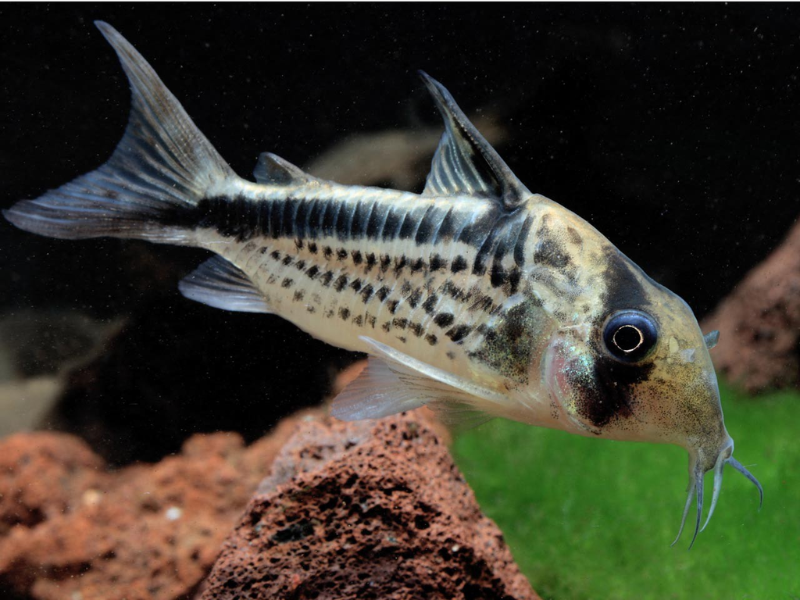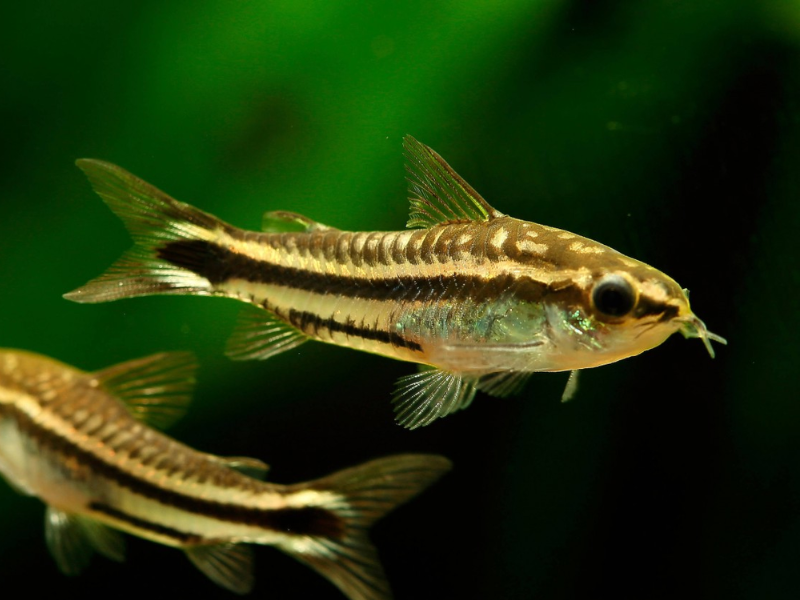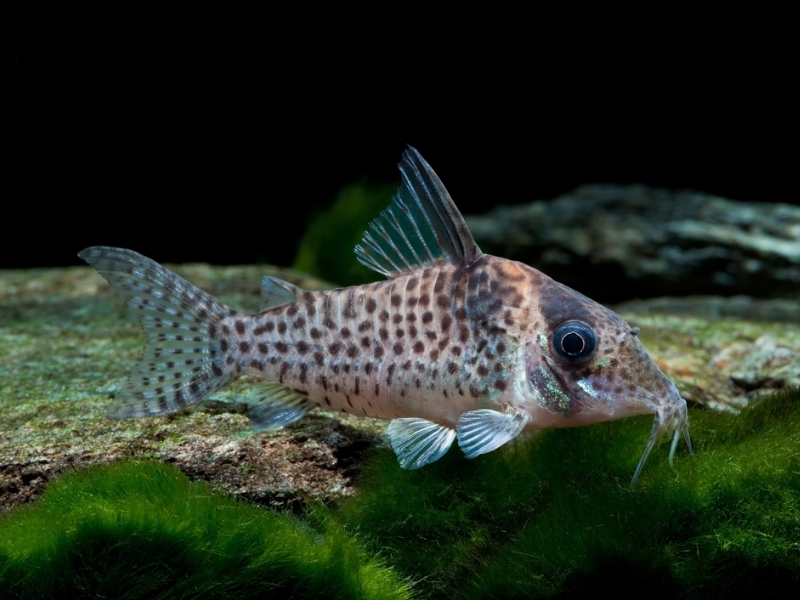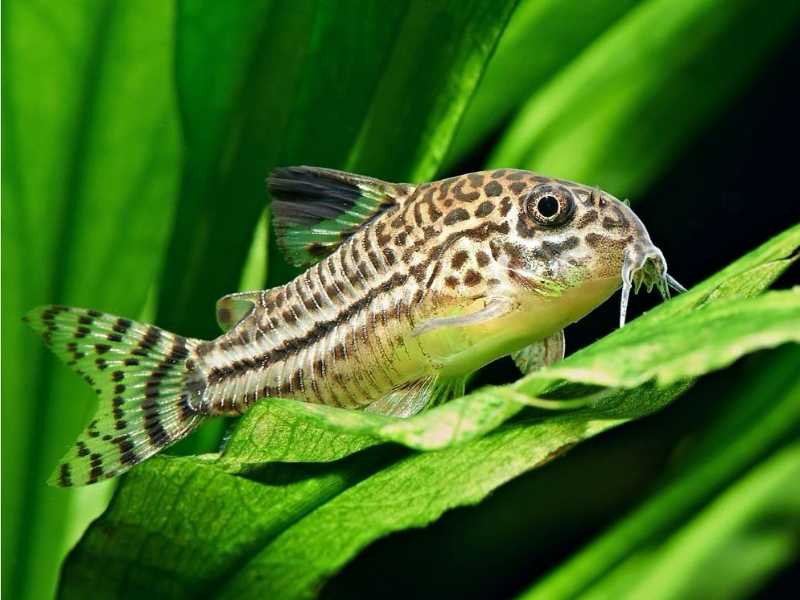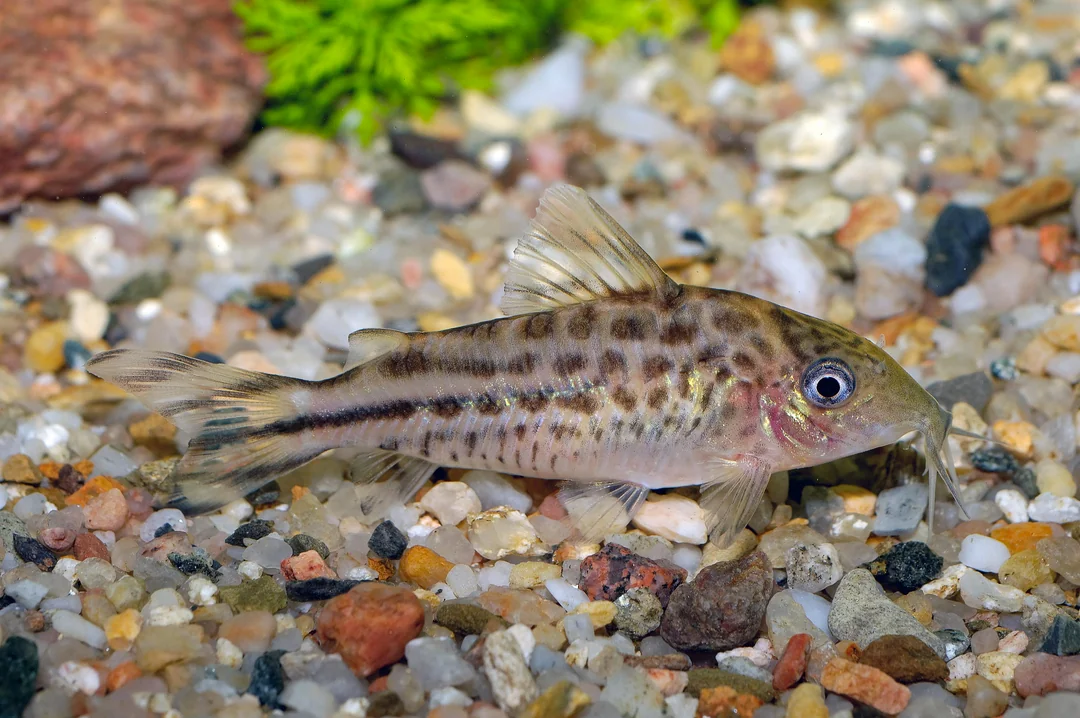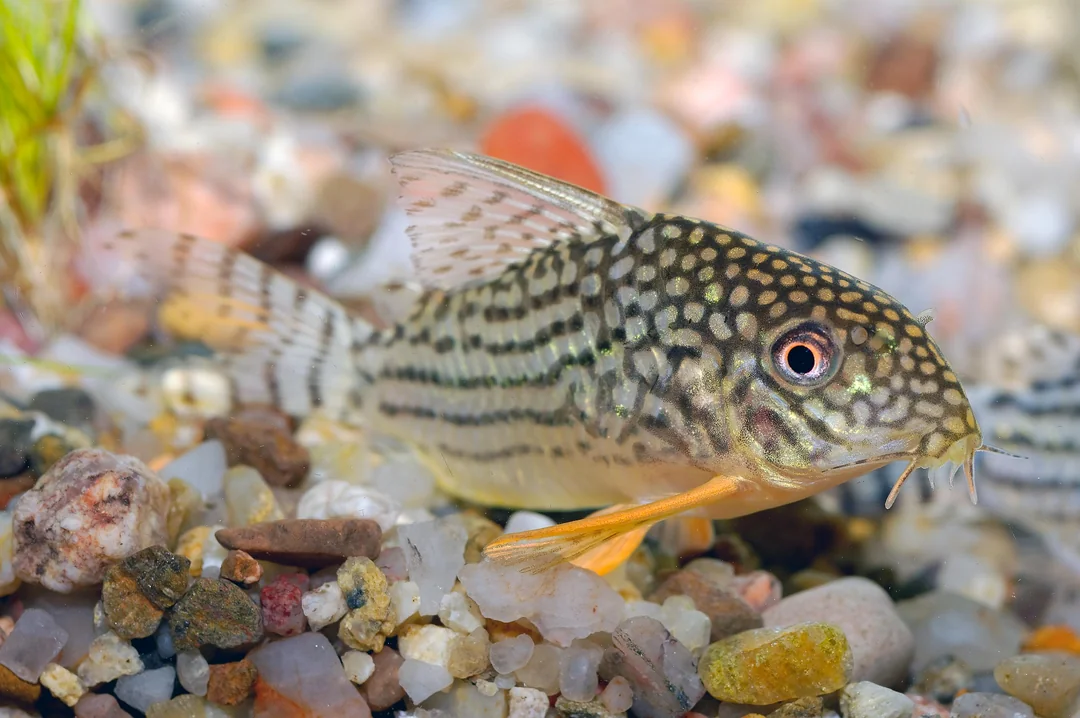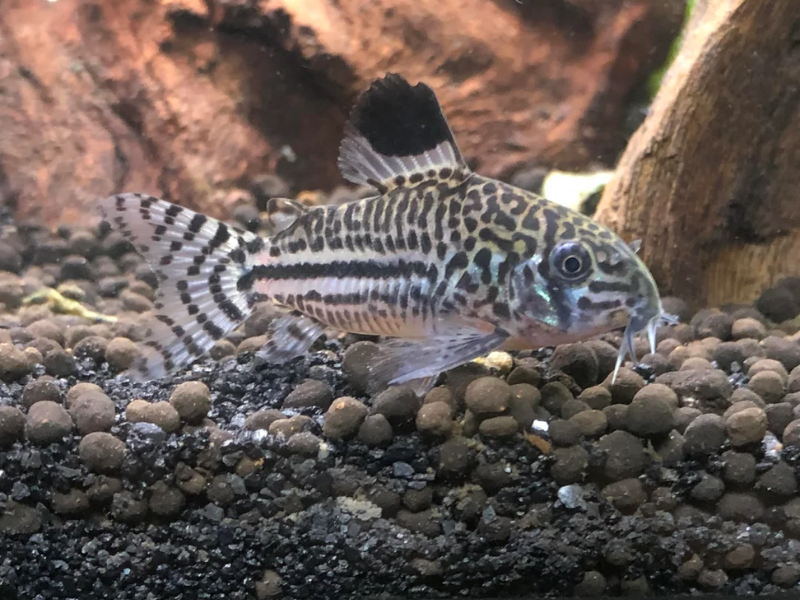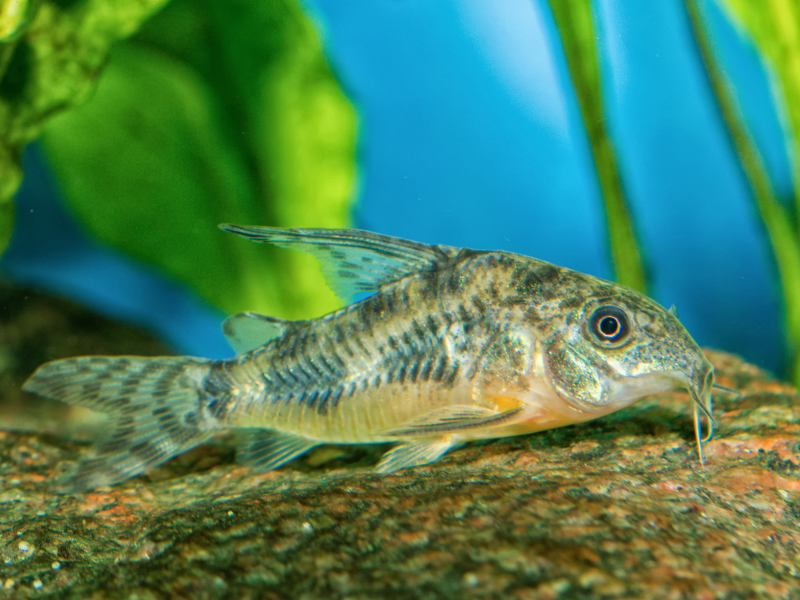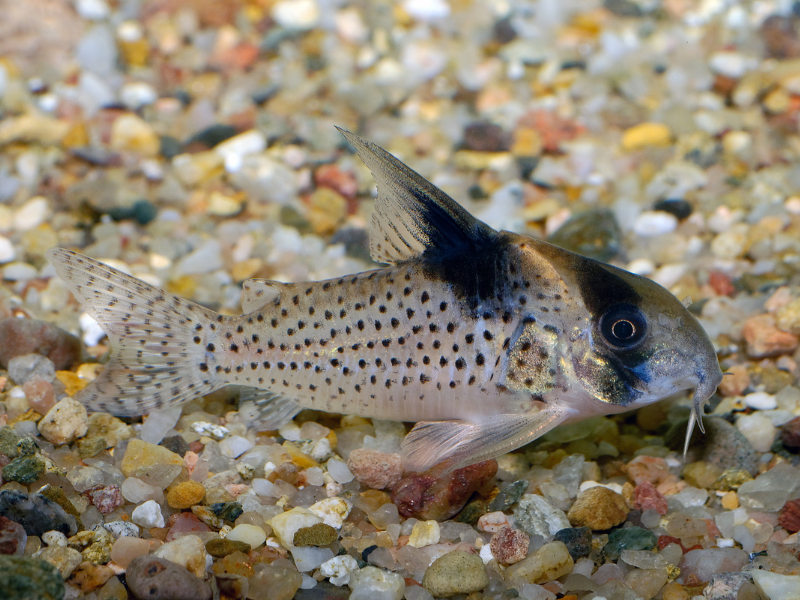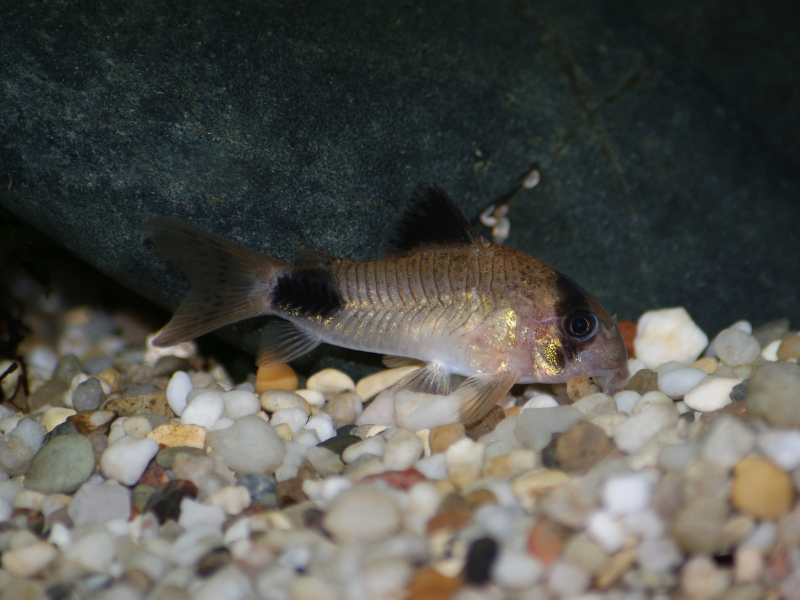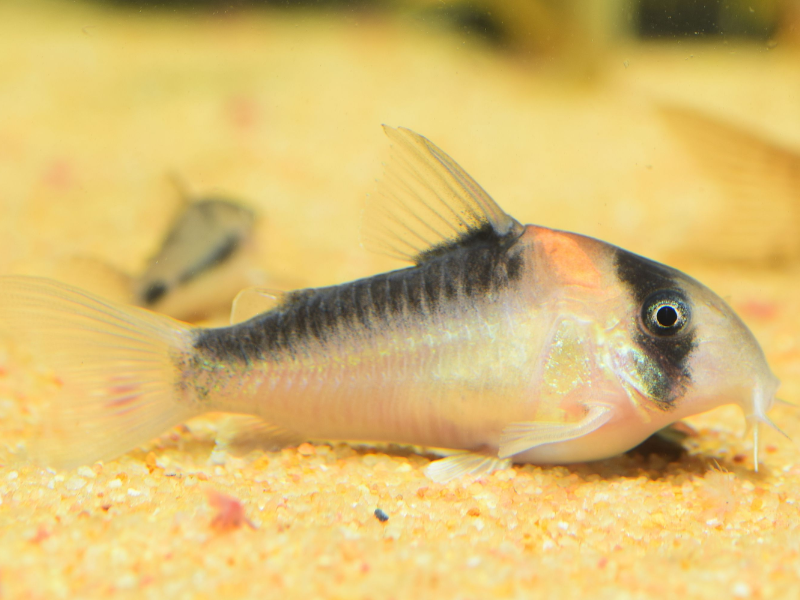Hoplisoma duplicareus
Duplicate Cory

Scientific Classification
Kingdom:Animalia
Phylum:Chordata
Class:Actinopterygii
Order:Siluriformes
Family:Callichthyidae
Genus:Hoplisoma
Species:duplicareus
Related Species:Corydoras adolfoi
IUCN Status:Not Evaluated
Quick Stats
DifficultyMedium
Environment
Freshwater
Temperature20-26°C
pH Level6 - 7.5
Water Hardness36 - 215 ppm
Lifespan5 years
OriginSouth America
Adult Size4-5.5cm
DietOmnivore
Creature TypeFish
TDS150 ppm
Water FlowLow Flow
Aquarium Building Information
Minimum Tank Size40L
Swimming Zonebottom
Minimum School Size6+
Oxygen ConsumptionLow
Waste ProductionLow
Metabolism RateLow
Activity LevelModerate
Feeding FrequencyDaily
Food TypesSinking Pellets, Wafers, Frozen Food, Live Food, Detritus
About This Species
Basic Description
The Duplicate Cory is a peaceful, bottom-dwelling catfish native to South America, known for its social nature and suitability for community aquariums. As a schooling fish, it thrives in groups and feels most secure when kept with several of its own kind, exploring the bottom of the tank together. These omnivores are not picky eaters and will readily accept a variety of sinking foods, such as pellets and wafers, as well as occasional treats of frozen or live foods. Their constant foraging helps keep the substrate clean of leftover food. Because they spend all their time on the bottom, it's important to provide a soft substrate like sand or fine gravel to protect their delicate barbels. This species prefers stable water conditions and a gentle current. While generally hardy, they are best suited for aquarists who can maintain consistent water quality. Their small size and peaceful demeanor make them an excellent addition to a wide range of freshwater community setups, provided their tank mates are also calm and not large enough to see them as a meal.
Detailed Description
The Duplicate Cory, scientifically known as Hoplisoma duplicareus, is a fascinating benthic catfish from the slow-moving rivers and tributaries of South America. In its natural habitat, it inhabits waters that are often soft, slightly acidic, and stained with tannins from decaying leaf litter. These environmental factors should be considered when creating an ideal aquarium setup, which would include gentle water flow, ample hiding spots among driftwood and botanicals, and a soft, sandy substrate to facilitate their natural foraging behavior without damaging their sensitive barbels. As a highly social species, it is crucial to maintain them in groups. A solitary individual will be stressed and shy, while a school will display more confidence and interesting social interactions. Their swimming activity is concentrated at the bottom of the tank, where they tirelessly sift through the substrate in search of food. This species is an omnivore with a broad palate. A balanced diet should consist of high-quality sinking pellets or wafers as a staple. This must be supplemented with a variety of frozen and live foods to ensure they receive all necessary nutrients. They also contribute to the tank's ecosystem by consuming detritus and biofilm. A notable physiological trait is their ability to breathe atmospheric air. They will occasionally dart to the surface for a gulp of air, which is absorbed through a specialized part of their intestine. This is a natural behavior and an adaptation to the sometimes oxygen-depleted waters of their native environment. However, frequent gasping at the surface can be an indicator of poor water quality or low dissolved oxygen levels in the aquarium. Due to their relatively low waste production, they are considered to have a small bioload, but like all aquarium inhabitants, they require regular water changes and stable parameters to thrive.
Scientific Description
Hoplisoma duplicareus is a species of freshwater catfish belonging to the family Callichthyidae, a group commonly referred to as armored catfishes. As a member of the order Siluriformes, it shares characteristics typical of the group, including the presence of sensitive barbels around the mouth which are used for chemoreception and locating food within the substrate. Its body morphology is described as compressiform, being moderately compressed laterally, and is protected by overlapping bony plates or scutes rather than scales. This armor provides defense against predation. One of the most significant physiological adaptations of H. duplicareus is its capacity for facultative aerial respiration. It possesses a highly vascularized posterior intestine that is modified to absorb atmospheric oxygen. This allows the fish to supplement its gill-based respiration by gulping air from the surface, an evolutionary response to the hypoxic (low-oxygen) conditions that can occur in its natural South American habitats. Its metabolism rate and overall oxygen consumption are low, which contributes to its resilience in such environments. Ecologically, H. duplicareus is a benthic omnivore and detritivore. Its feeding strategy involves actively foraging through the substrate, consuming a wide range of organic matter, including small invertebrates, algae, biofilm, and decaying plant material (detritus). This behavior plays a role in nutrient cycling within its ecosystem. The species exhibits a distinct schooling social structure, which is a key aspect of its behavioral ecology. The current IUCN Red List status for Hoplisoma duplicareus is Not Evaluated (NE), indicating a lack of sufficient data to assess its conservation status and population trends in the wild.
Breeding Description
Breeding the Duplicate Cory can be a moderately challenging but rewarding endeavor for the prepared hobbyist. Success often requires a dedicated breeding aquarium and careful conditioning of the adult fish. Distinguishing between sexes is key for establishing a proper breeding group. Females are generally larger, wider, and have a more rounded body shape, particularly when viewed from above, as they become full of roe. Males, in contrast, are smaller and more slender. For optimal results, a ratio of two or three males to one female is recommended to increase the chances of fertilization. Spawning can often be triggered by simulating a natural rainy season. This is achieved by performing a significant water change with water that is slightly cooler and softer than the main tank's. Increasing aeration and providing a diet rich in live and frozen foods for several weeks beforehand can also help condition the fish for breeding. During the spawning event, the fish engage in a characteristic behavior known as the 'T-position,' where the male fertilizes the eggs held by the female between her pelvic fins. The female will then deposit the adhesive eggs in small clutches on various surfaces she has meticulously cleaned, such as the aquarium glass, plant leaves, or spawning mops. Since Corydoras do not exhibit parental care and will often consume their own eggs, it is advisable to either remove the adult fish from the breeding tank after spawning is complete or carefully move the eggs to a separate, well-aerated nursery tank. The nursery tank should have gentle filtration and a bare bottom for easy maintenance. An antifungal agent may be added to the water to prevent the eggs from fungusing. After a few days, the fry will hatch and initially subsist on their yolk sacs. Once the yolk sac is absorbed, they must be fed microscopic foods like infusoria or microworms. As they grow, they can be transitioned to newly hatched baby brine shrimp and finely crushed high-protein flake food.
Generate Printable Card
Create a printable card for this creature to display in your store or aquarium. The card includes a QR code for quick access to more information.
